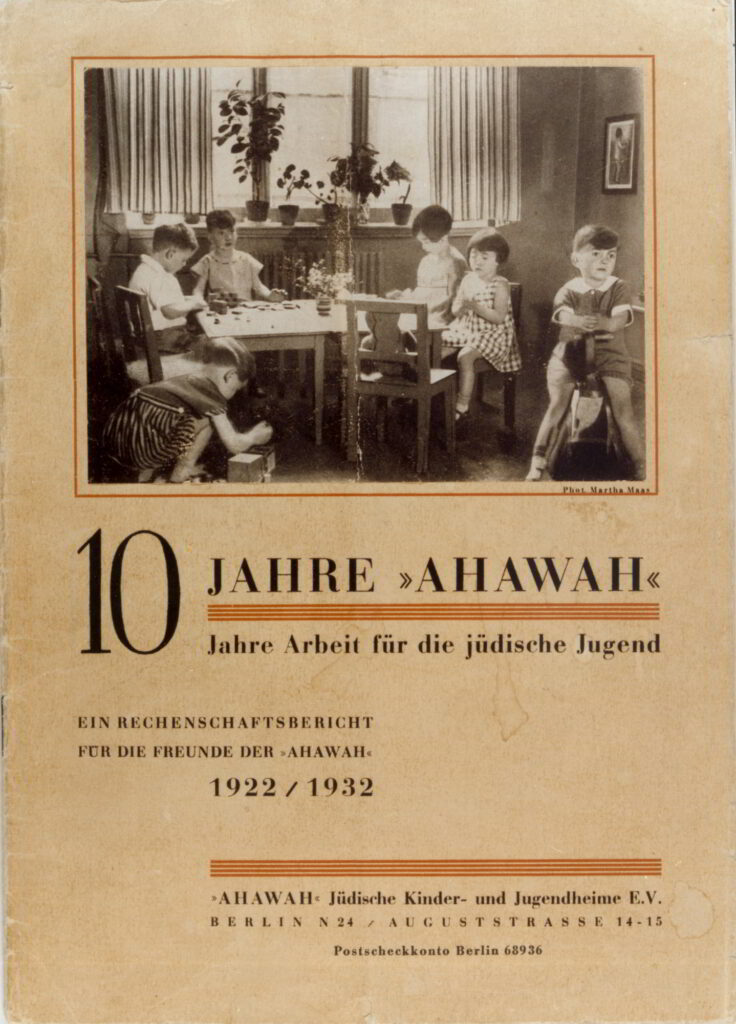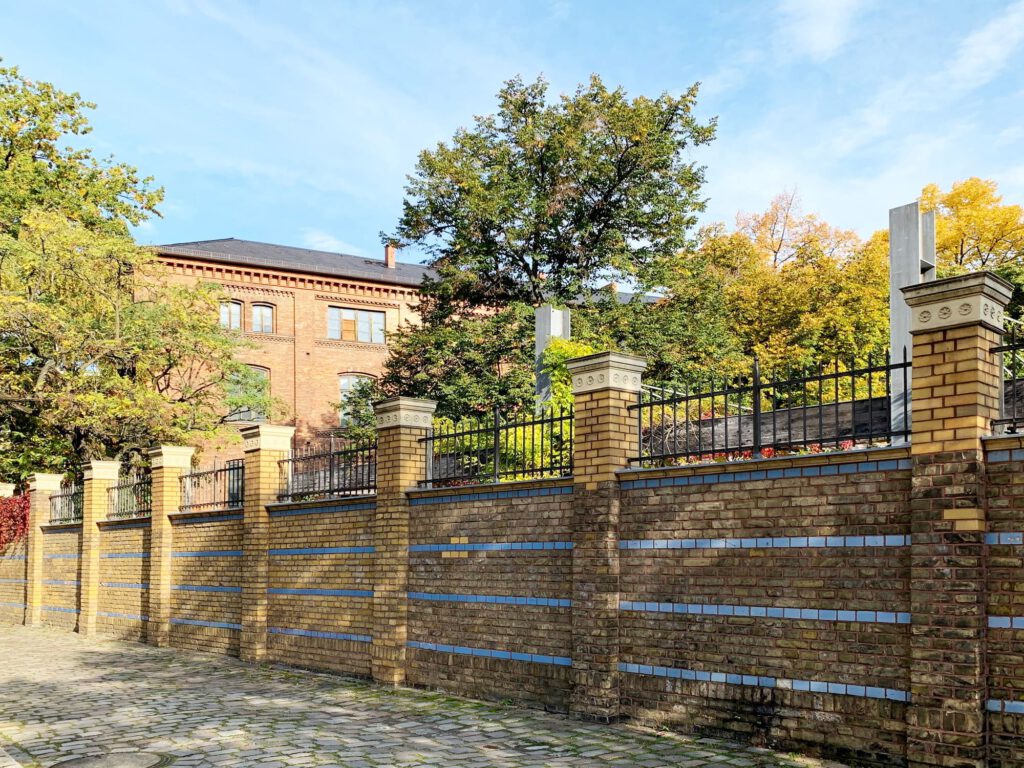From the open space of the New Synagogue Foundation, where the synagogue’s main hall used to be, one can see a vacant, red brick building: the former children’s home Ahawa (Love). Designed by the architect Eduard Knoblauch, who, a short time later, was also responsible for the design of the New Synagogue, the building initially served as a hospital for the Jewish community. From 1916 onwards, it housed a public soup kitchen for Jewish children; in 1922, it became the Jewish children’s home Ahawa, which was oriented towards reform education. Initially conceived as a home for refugee children from (Central) Eastern Europe, it soon became a safe haven for children from precarious economic and social backgrounds. After the National Socialist assumption of power, the founder, Beate Berger, succeeded in setting up a children’s home with the same name in Kiryat Bialik, Israel. In the years leading up to 1939, nearly 100 children from the Berlin Ahawa and another 200 children from Europe were brought to Palestine. Most of the resident of the children’s home who remained in Berlin were deported to concentration camps and murdered. During the GDR regime, the Bertolt Brecht High School moved into the building, which Regina Scheer also attended. After reunification, she researched the history of the building and published her results under the title AHAWAH. Das vergessene Haus: Spurensuche in der Berliner Auguststraße (AHAWAH. The Forgotten House: Searching for Traces in Berlin’s Auguststrasse). In November 1992, a first commemorative plaque was placed in the courtyard, followed by another in 1998, which was revised and renewed in February 2012.


Left: 10th anniversary of Ahawah, Berlin 1932, source: Centrum Judaicum, Archive
Right: The vacant building of the Ahawah seen today from the open space of the New Synagogue Foundation. © Centrum Judaicum, photo: Henry Lucke
Timeline Berlin
- ↑ The New Synagogue of Berlin on November 9/10, 1938 – November 9, 1938
- ↓ Liberal Judaism—From Germany and Berlin across the globe – 1895
